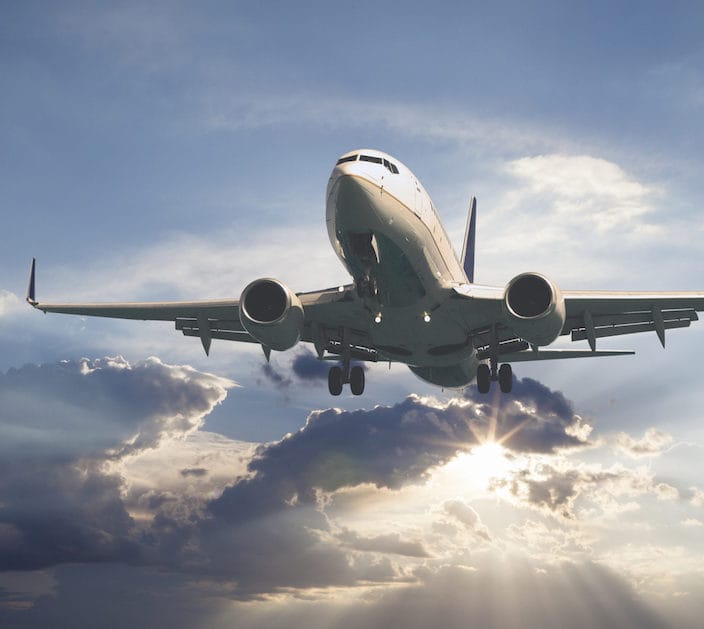That’s something Steve Rosenbaum does not want to find out the hard way – so he is doing everything in his power to make Canadian airlines more allergy-friendly. The Toronto father of three young boys – one of whom has severe allergies to nuts and another to sesame – Rosenbaum wanted to arrange a family trip to Disney World, and called to find out if Air Canada would be willing to refrain from serving nuts on their flight to minimize the risk to his sons.
He received the standard message that states such a move would be unfair to other passengers and that he should bring the proper protection. He was flabbergasted.
“They don’t understand the whole concept of an EpiPen buying 15 minutes. If you’re at 38,000 feet, even if you use a second EpiPen, that might only buy you half an hour,” he says. (In most instances, reactions are brought fully under control by a single auto-injector; in others they are not.) At 38,000 feet, you’re in such a vulnerable position that they should be taking a more reasonable and responsible approach.”
Rosenbaum has since written letters and spoken with representatives from several major airlines, some of whom helped to accommodate him and his family, but stopped short of agreeing to change their airline’s policies.
Recently, he also launched a formal complaint to the CTA, where there are already eight food and environmental allergy complaints in progress. (In the U.S., more than 200 passengers have made allergy-related complaints in the past eight years.)
He recognizes that a “nut-free” aircraft is impossible. But he points out that airlines can significantly reduce the risk of exposure by not serving highly allergenic items such as peanuts and nuts, especially when, prior to boarding, a passenger has alerted the airline about a life-threatening allergy.
Now Rosenbaum hopes that more parents will speak up and ask for change. “We don’t need another child to die and then name a law after them like Sabrina’s Law,” says Rosenbaum, referencing the groundbreaking Ontario law that protects anaphylactic students.
“We need to do what we can to protect and educate. Because in an environment where you are locked in a cabin for two or three hours at 38,000 feet, you need to be protected and have rights. We need a reasonable and collaborative approach by both allergic passengers and the airlines.”
Laurie Harada, the executive director of Anaphylaxis Canada, agrees that there needs to be dialogue among all parties – including passengers, allergists, airline management, flight attendants and food providers. In the meantime, Harada suggests allergic passengers and parents of allergic kids need to protect themselves by choosing airlines that will best accommodate their needs, by bringing their own food, and by wiping down armrests and tray tables as needed.
Harada also emphasizes that allergic travelers should not only speak up when they have been treated badly – and they should do it civilly – but also when they have been treated well. When airlines begin to understand that millions of North Americans suffer from allergies and a large percentage of them fly, she adds, they will be more likely to listen.
“Tell them, tell others, tell their bosses. If we give more positive messages about what’s working well, it can work to our benefit. It’s not just about what went wrong.”
Paige Humphreys plans to once again escape to sunny Hawaii this winter, and already, she’s hoping that nothing will go wrong. As usual, she will pack the nut-free snacks and the extra Twinjects for the flight.
She will also call the airline and tell the agents about her allergies, but she knows from experience that they may or may not make any special accommodations for her. “If I came in a wheelchair, they would make room for me. Lord knows I didn’t choose thing, but sometimes, they make it seem like it’s our choice,” says Humphreys.
“If you can get people who are addicted to cigarettes to not smoke for six hours, for goodness’ sake, I’m sure they could munch on potato chips and not eat peanuts or tree nuts for six hours, you know?”
From the Winter 2009 issue of Allergic Living magazine.
To order that issue, or subscribe here.
See Also:
- Allergic Living‘s comparison chart of allergy policies/practices of major airlines
- For the article “Flying Tips”, click here.
- See “Pet Policy Reaction” for an article on Air Canada’s decision to allow pets on airplane cabins.
© Copyright AGW Publishing Inc





